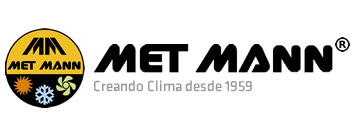Temperature pest control: when all other pest control methods fail
Although traditionally chemical treatments such as pesticides, herbicides or aerosols were used, these types of resources are not the most recommended since they can lead to cross contamination and not be the most efficient methods depending on which pest to exterminate.
The legislation that controls the use of these pest control methods is increasingly demanding and requires greater control by the companies that implement them. Furthermore, these controls do not always guarantee the extermination of the pest.
Pest control through heat treatment arises to respond to the need to eliminate possible pests with an effective, clean and fast method. Some of its main advantages are:
-
The time required for this type of disinsection to take effect is very fast. The process usually takes between 3 and 48 hours and does not require a subsequent security period before allowing access to the area in question again.
-
It is totally safe for people, so it does not restrict activity in neighboring areas, nor does it require hermetically sealing the affected area for its effectiveness.
-
It is highly effective against insects, affecting all phases of their development, eliminating eggs, larvae and adult insects alike.
-
It has a complete scope in the affected area, reaching from the largest infestation foci or colonies to the most isolated areas. This allows adapting sanitation programs to avoid pests in the future.
-
It allows an ecological control of pests and diseases by not using biocidal substances such as insecticides, aerosols or other gases harmful to health, this method complies with the regulations for hazard analysis and critical control points (HACCP).
This method can be adapted to any type of industry or space, in recent years it has gained great popularity by many companies in the agri-food sector, looking for methods to control agricultural pests that avoid directly affecting their production.
How the temperature pest control process works
Insect pests usually develop in the temperature range between 15º and 35ºC. For this type of disinsection, specialized equipment is required that manages to raise and maintain the ambient temperature of the space in question at a temperature that must oscillate between 50º and 60ºC for a certain time, this thermal jump manages to eliminate the insects directly affecting their systems biological.The process is divided into several phases:
-
Heating: During this process, hot air from the equipment is introduced into the room to disinsect through a hose, gradually raising the temperature until reaching a temperature higher than 50ºC. Consideration should be given to removing equipment or elements from the affected space that could be damaged by high temperatures.
-
Maintenance: Once the required temperature range has been reached, it is necessary to maintain it for a period of between 3 and 48 hours in which little by little all the insects will be eliminated, since the high temperature causes the proteins and enzymes of the insects to become coagulate, affecting all stages of their evolutionary cycle.
-
Cooling: Once the treatment is finished, the temperature should be lowered gradually to its usual level to avoid possible damage caused by the temperature jump.
Hot Air Pest Control with KILL MANN
At MET MANN we are experts in providing our customers with air conditioning solutions adapted to their needs. For pest control through temperature we have developed a high temperature electric heater, our KILL MANN model.
A device specially designed for the control of pests by means of temperature, with a format that facilitates its transport and is highly versatile, allowing the equipment to be adapted to other uses, such as heating or ventilation. Do not hesitate to contact our customer service team if you have any need.


